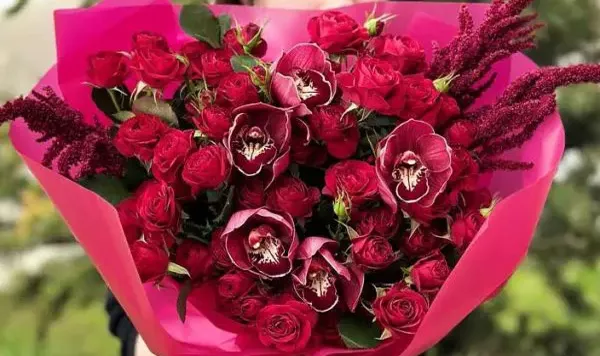Professional Caring for an Orchid at Home. Tips To Follow
Orchids have become extremely popular due to their delicate and exotic beauty. Most orchids kept at home include Phalaenopsis – the Moth Orchid, Dendrobium, Cymbidium, Miltonia – the Pansy Orchid, Cambria, Cattleyas, Vanda. These orchids have long blooming times and are quite easy to care for.
Basically all you need to grow orchids like Phalaenopsis or Cambria is to bathe them once per week, a clear orchid pot, diffused sun, and no overwatering.
Orchid Bloom Time & After Bloom Care
Caring for an orchid routine depends on whether it is blooming or not.
Caring for an orchid during the bloom time
Following 2 simple rules will let your orchid bloom longer, so you would enjoy it to the fullest.
- During the bloom time, the most important rule to follow is to avoid overwatering, so the roots wouldn’t rot. Use warm water of about 35 Co for bathing your orchid, and add special fertilizers for orchids to the soil. Carefully follow the directions mentioned on the pack.
- Do not replant the orchid when it’s blooming. Try not to move it as well, not to stress the plant.
Orchid after flowering care
When you see that stem with flower is brown and has faded, then the bloom time is over. Now you need to cut this stem and start watering your orchid less. In case the stem stays fresh and green, but the bloom has fallen off, then do not cut it – this stem may produce more flowers later.
- Move your orchid to a cooler place where the temperature is maximum of 18 °C;
- Let your orchid rest for 7-8 weeks so it can start growing new stems and forming buds;
- In case you need to repot your orchid then you should choose a bigger pot, don’t harm the roots and move the orchid to the new place.
Winter Care
In winter, orchid watering should be less intense. You need to water the flower once every week and a half. If you have only recently acquired an orchid, for example as a gift for a National Boss Day in 2023, you might not know that it is highly unrecommended to place the pot back to the saucer immediately after watering the plant. First, you need to let the flower get rid of excess moisture through the drainage hole. Most window sills are quite cool, so low temperature in winter may cause orchid’s constant saturation with cold water. This may eventually lead to hypothermia, cause fungal or bacterial diseases. So it’s better to use air humidifier in winter, avoid watering by spraying and make sure there is no water in the saucer. Try to maintain a cool temperature in the room with your orchid. It should be between 15 and 23 degrees max. If you want to accelerate the appearance of new flowering buds then don’t keep the same temperature and change it within this range.
Summer Care
In summer soil dries out faster, so the orchid leaves might start loosing their elasticity, roots get dry, and the buds might fall off. That’s why it is a good practice to immerse the orchid pot in a bowl of water for several hours.
Natural daylight is quite enough for the plant in summer. But if the temperature gets too hot – more than 27 °C – then you should choose a cooler place for the orchid. The higher the room temperature, the more ventilation is needed to provide the flower with fresh air.
Keep feeding the plant with fertilizers in summer so that it gains the necessary strength to bloom.
Many people received exotic and elegant orchids as a gift for National Boss’s 2023 in Canada but couldn’t enjoy their beauty for a long time. Now, when you learned how to properly take care of an orchid, you can be sure that a new plant you receive or give someone as a gift will please your eye and bloom much longer.
